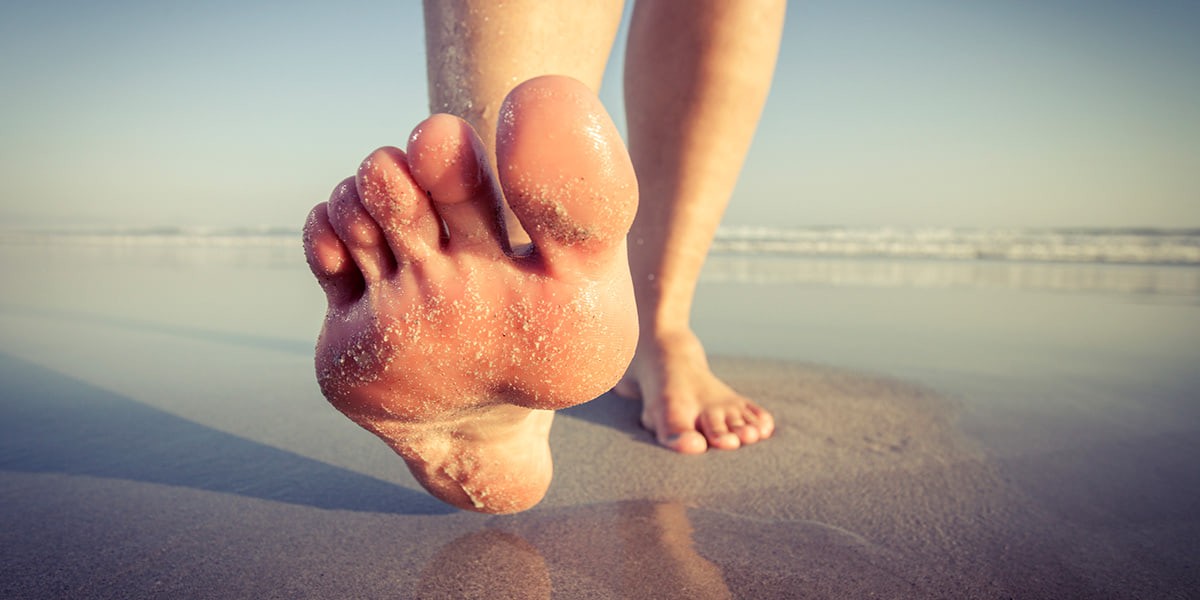There is no cure for type 2 diabetes, but it is possible for some people to put it into remission. Here’s what you need to know.
How to get rid of bunions
Banishing bunions – those painful, bony swellings alongside the joint of your big toes – has become a lot easier, thanks to new procedures.

The office of Dr. Roy Mathews, a doctor of podiatric medicine in Vancouver, gets a lot of traffic – foot traffic. “I see lots of bunions,” Mathews says, adding that he’s performed more than 3,000 surgeries to remove the painful, protruding bump that can appear alongside the joint of the big toe.
Mathews says it’s important to know that bunions form when a misalignment of the foot causes the big toe to push against the next toe, which makes the big toe joint shift and become inflamed. Under pressure by shoes, the joint becomes more painful and inflamed as time goes on. Sprains or fractures, flat feet, neuromuscular disorders or leg-length discrepancies can also cause bunions. Because some foot types are more prone to bunions, and because people tend to inherit the shape and structure of their feet from their parents, bunions tend to run in families.
Janine Brown,* the COO of a Vancouver-based law firm, found herself in this predicament 5 years ago. “The bunion was causing me a significant amount of pain,” says Brown. “I was having difficulty finding shoes.” In addition, she could no longer jog comfortably or wear high heels.
Brown tried orthotics, which are specially designed shoe inserts that can correct foot alignment, as a first step in alleviating the discomfort. But given the nature of her work, she wasn’t able to avoid wearing high heels – which exacerbate bunions – and ultimately decided to have the deformity corrected surgically.
Now back to running and once again able to wear high heels, Brown is happy she made the decision to remove the bunion. “I would do it again in a heartbeat.”
Bunion prevention 101
Not all stories involving bunions end like Brown’s, with surgery. You can slow or halt the progression of a bunion by wearing footwear that supports the foot evenly.
“Avoiding high heels and tight, narrow shoes – except for special occasions – and choosing supportive flats for walking or standing during extended periods can help,” says Hartley Miltchin DPM, a Toronto-based doctor of podiatric medicine. “So can having prescription orthotics made, which are tailored to your foot.
“That’s because these strategies can eliminate the over-pronation of the foot, which leads to bunion development. We walk with our feet over-rolling towards the arch and big toe area, and the bones of the foot shift out of alignment to compensate for that imbalance. In order to prevent or eliminate bunion progression, we have to realign that bone shift, caused by the inherent mechanical imbalance (over-pronation).”
If you continue to wear improper footwear and don’t address the foot imbalances, you may discover your bunion gets worse. It may become painful, red and inflamed. Your big toe may start shifting towards the smaller toes, deforming those toes, and your big toe joint may become stiff.
If that happens, ice packs, analgesics and foot baths can provide temporary relief. But if the pain is severe and affecting your mobility, a consult with a podiatrist is wise, say experts.
“Have your bunion surgically corrected when it’s really bothering you and interfering in your lifestyle,” says Miltchin, who says he often sees patients who aren’t experiencing pain – but want the unsightly deformity removed. He advises those individuals to wait.
New surgical options for bunions
While orthopedic surgeons still perform traditional procedures involving general anesthesia, larger incisions and longer recovery periods in hospitals, many podiatrists now offer less-invasive procedures that have patients mobile within days.
Miltchin performs a minimally invasive bunion surgery during which he makes 2 to 3 tiny incisions (without stitches) in the foot, allowing him to realign the bunion deformity. Once the bunion is realigned, he tapes it tightly and has the patient wear a stiff surgical shoe for 6 weeks to effectively “set” the surgical area. His procedure allows patients to forgo stitches, pins, wires, screws, metal plates, casts/crutches and narcotic painkillers, and be up and walking immediately. An antibiotic is taken for 1 week, as a precaution to avoid the risk of infection.
Mathews, too, performs a less-invasive procedure, called tri-correctional bunion surgery, which involves making incisions that allow the bones to be pushed back into their original positions. Once in alignment, they are secured with a tiny titanium screw. A cast is then applied, which is worn for 2 weeks during recovery at home. A patient can typically return to normal daily activities within 2 weeks and physical activity within 5 weeks, without the need for physiotherapy.
While surgery can effectively eliminate bunions, it isn’t for everyone. Severe diabetics and those with poor circulation should refrain from bunion operations. “You run the risk that you won’t heal,” says Miltchin.
If you’re unsure about your circulation, a doctor-prescribed test of blood flow in the feet, something Miltchin performs on patients prior to surgery, can determine viability.
Next steps
- At the first sign of a bunion: Visit a podiatrist to find out what shoes can prevent further change in the joint.
- If you need surgery: Find out how much a bunion procedure will cost – and how long you’ll have to wait for it. Procedures done in hospitals by surgeons referred by your doctor will likely be covered by your provincial health insurance, but they have lengthy wait times. Procedures done by podiatrists in their offices commonly have shorter wait times but will likely not be covered by government plans. They are commonly covered by employee health benefit plans, however, up to a stated dollar limit, so if you have health benefits at work, check your coverage or ask your HR department to confirm.
- After surgery: Bunions can theoretically recur, though it’s rare. To prevent this, experts advise correcting over-pronation through proper shoes and inserts.
*Name has been changed upon request


